The UK is on the Brink – Part 1: The Divide has Been Brewing for Many Years
Hi Everyone,
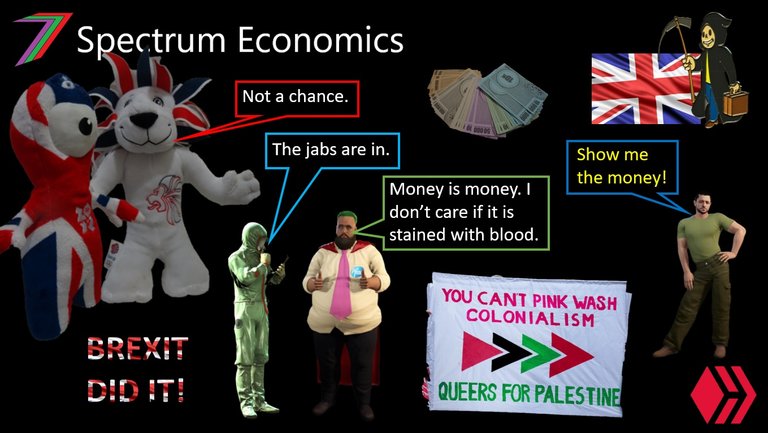
It has been a tumultuous couple of weeks in the UK. We had more than a week of protests and riots. This was triggered by the murder of three young girls and the brutal stabbings of ten other people, eight of them were children. I briefly discuss this incident in my July 31and August 7 Actifit posts. The reasons for the protests and riots go much deeper.
On the surface, it appears things have calmed down, but I strongly believe this is just the respite before things significantly worsen. Nothing has been solved. The same grievances still exist. Therefore, it is inevitable that tensions will flare up again soon. They could be triggered by something else, or they might just flare up by themselves.
What Are the Real Reasons for People’s Anger?
The UK is divided and has been divided for a very long time. The political system has always been used to divide the people into two camps: the left and the right. The UK has divided people with two parties and two ideologies. Labour representing the left ideology and Conservative representing the right ideology.
Over the decades, the parties have remained the same, but the ideology has been somewhat fluid. The emphasis has changed to suit the Establishment’s needs. However, the emphasis of the parties has moved together in apparent opposition. Below are several examples of how the parties have opposed each other.
- Socialism (Left) vs. Capitalism (Right)
- Collectivism (Left) vs. Individualism (Right)
- Liberalism (Left) vs. Conservatism (Right)
- Globalism (Left) vs. Nationalism (Right)
- Remain in EU (Left) vs. Leave EU (Right)
In theory, they opposed each other. However, in practice they were very similar. The public was becoming increasingly aware of the similarities between the two parties. It was an erosion of their concept of democracy. If voting does not lead to change, what is the point in voting? Voter turnout to elections significantly dropped (i.e., from over 70% to around 60%). People had become divided regarding the extent of change. However, the divide was not compelling.
Brexit Widens the Divide
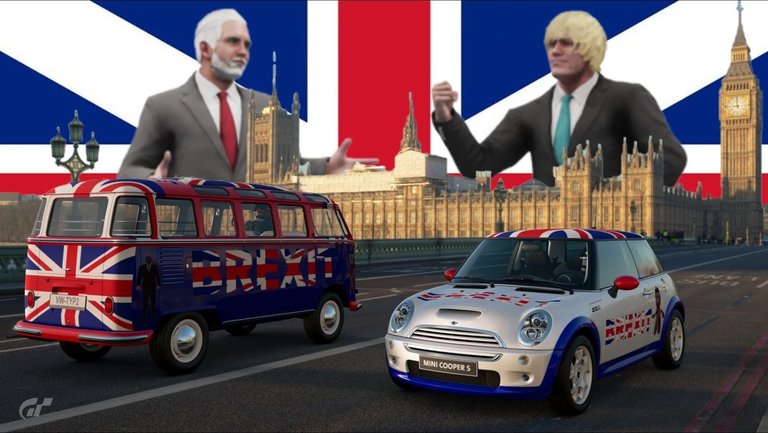
Personal bias: I personally support Brexit. A country should never be controlled by external parties.
As part of his 2015 General Election campaign, Prime Minister David Cameron promised a referendum on the UK’s membership in the European Union (EU). This sparked a new divide between the people. This divide was not initially down party lines. The majority of MPs advocated to remain in the EU. Only 159 out of 650 MPs voted to leave the EU (Mirror). There was mixed support from the media. This support was more closely down party lines than that of the MPs. The media that supported ‘remain’ used fearmongering tactics relating to the economy and the NHS. It is very easy to create fear about the unknown.
The tactics used by the leave campaign might have been even more unethical than those of the ‘remain’ media. In a 2023 interview, Dominic Cummings, Campaign Director of Vote Leave, admitted to several lies relating to extra money for the NHS and the likelihood that Turkey would join the EU (New Statesman). The lie about Turkey was effective because Turkey has a large Muslim population. Membership in the EU could enable these Muslims easier access to the UK. This is particularly relevant to our current situation. Concerns around immigration were one of the main reasons people voted in favour of leaving the EU (Independent).
The expected outcome of the referendum was for the UK to remain in the EU. Polls consistently put ‘remain’ in the lead. See Figure 1 from the Financial Times.
Figure 1: Trends in Brexit Polls
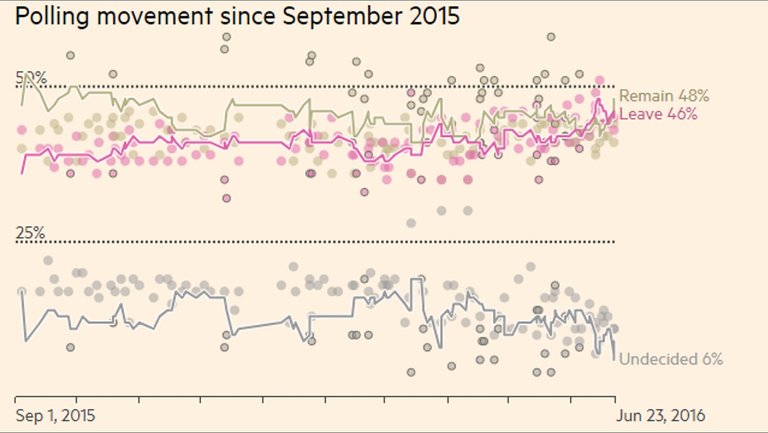
Source: Financial Times
In June 2016, the British public voted and ‘leave’ won. The dirty tactics used by the leave campaign most likely led to this outcome. Without them, ‘remain’ would have won.
I strongly believe that both the UK and EU Establishment wanted the UK to remain in the EU. Closer ties between the UK and Europe and consistent regulations and laws are beneficial to big business and banks. An overarching governance of EU countries centralises and secures power for the elites. However, it is interesting that the Establishment did not put an end to the tactics that made a leave outcome a possibility. Was it an oversight? Did they want the vote to be close? Was there a rift in the UK Establishment?
Leaving the EU was referred to as Brexit. Brexit became one of the most divisive topics in recent UK history. The referendum had the highest turnout in UK history. It had a 72% voter turnout; 33.55 million people voted (Statista). That is almost 5 million more people than voted in the 2024 UK General Election.
After the referendum, David Cameron immediately resigned as Prime Minister. He was replaced by Teresa May. Teresa May was not in favour of Brexit. In 2017, another general election was called. The Conservation Party won by a small margin. They were forced to form a coalition with another party (i.e., DUP). This led to two years of not advancing Brexit. There were disagreements between implementing a soft or hard Brexit. This stoked tensions on both sides.
In 2019, Teresa May was replaced by Boris Johnson. Boris Johnson was one of the main campaigners for Brexit. The lack of majority in parliament meant Brexit deals could still not be pushed through parliament. There was another general election at the end of 2019. This was dubbed the Brexit election. At this point, leave and remain were divided between the main political parties. The Conservative Party under Boris Johnson supported leave, and the Labour Party under Jeremy Corbyn supported another referendum.
The Conservatives won the general election convincingly. This essentially put an end to the Brexit debate. However, the country was still strongly divided. The Conservative Party’s large margin of victory was more a product of the first-past-the-post voting system than overwhelming support for them or Brexit. The total number of votes for parties supporting leave was slightly lower than parties that supported another referendum or to remain in the EU (House of Commons).
Has Brexit been a success? It is still too early to determine. A lot has happened since the UK officially left the EU. The UK’s response to Covid-19 has had a massive impact on society and the economy. This was followed by the response to the war in Ukraine. The Conservative Party has done little to capitalise on new freedoms and opportunities for the country. However, they have managed to antagonise the people in Northern Ireland over the Northern Ireland Protocol. It essentially keeps Northern Ireland tied to the EU in certain ways while creating barriers between them and Great Britain. People are divided on this. Some see the closer connection to the EU as a benefit, while others see it as breaking off from the rest of the UK.
I have written extensively about Brexit between 2018 and 2020. See the following posts to read about how Brexit developed and my opinions of what was happening at the time.
- What’s going on with Brexit?
- Brexit – Still hanging around
- Brexit confusion continues
- The Brexit Election
- Will Brexit unite the Commonwealth?
Covid-19 Divide
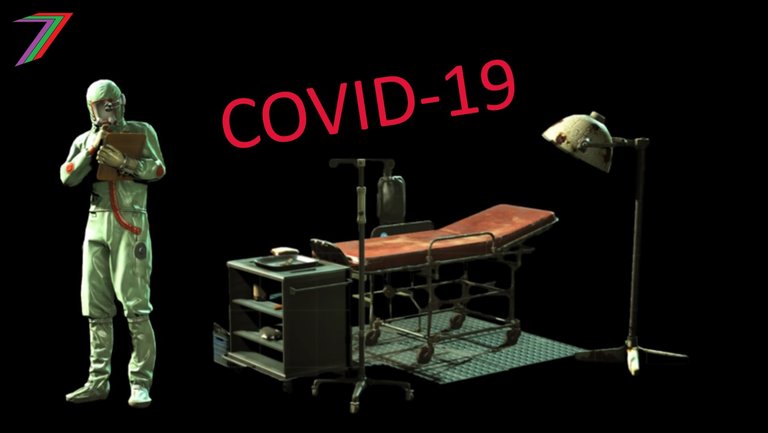
In 2020, the world was hit with the Covid-19 pandemic. Covid-19, the disease caused by the SARS-CoV-2 virus, was portrayed as a serious threat to all. Videos and images from January 2020, showed people dying on the streets in China (Mirror). When Covid-19 hit Europe, no such deaths occurred. Instead, the disease affected a disproportionate number of elderly people with pre-existing medical conditions.
The Government’s response was lockdowns, school closures, social distancing, mask wearing, curfews, etc. This essentially brought the country to a halt. It was proven very quickly that such measures made little difference to the spread of the virus. However, these measures were repeated several times over the course of almost two years.
Instead of focusing on a cure or treatment for Covid-19 using existing forms of medication, Governments insisted that a vaccine was to be produced. Vaccines can take decades to develop. This was obviously an inappropriate response to what was claimed to be an emergency.
Less than a year after the pandemic was declared by the World Health Organisation (WHO), governments and pharmaceutical companies claimed several vaccines were available. However, these were not vaccines; they did not provide long-term or even medium-term protection to those who received them. Instead, people required repeated boosters. They were not just ineffective; they were not even safe. Reports of vaccine injuries skyrocketed. See OpenVAERS for a breakdown of these injuries. These useless and potentially dangerous jabs were forced on people. If they did not take them, their freedoms would be curtailed. This included restrictions on travel and access to certain areas and venues. Some people’s jobs were even threatened.
I have extensively written about Covid-19. Below are just a handful of my most relevant posts.
- Summary of Spectrumecons Covid-19 Series
- My Concerns about the Covid-19 Vaccines
- Covid-19 Assault: Have the Establishment made the Right Moves? (Part 1)
- Covid-19 Assault: Have the Establishment made the Right Moves? (Part 2)
- Covid-19 Assault: Have the Establishment made the Right Moves? (Part 3)
- Covid-19 Crimes and Vaccine Fraud
To access all my posts relating to Covid-19, go to Part 2 of my Collection of Works.
All of the above created distrust in the Government. Their authoritarianism was becoming more obvious. This had greatly increased the level of public discontent. Most of the increased discontent was coming from Conservative voters (YouGov). The pattern of discontent was similar in the US, where ‘vaccine hesitancy’ among Republican voters had significantly increased (Time).
The Covid-19 fiasco was a trial run for a shift to more authoritarian governance in western countries. Discontent towards the Establishment was steadily increasing; the Trump experiment in the US and the outcome of the Brexit referendum were evidence of that. An authoritarian or even totalitarian form of governance has likely always been the end goal. However, the progression to this end point was at risk of being outpaced by the opposition to it. Speeding up the push to authoritarianism may have been necessary to beat the opposition to it. This also produced the risk that such a movement would be exposed. To a certain extent, the Covid-19 measures did that.
The fallout from the Covid-19 fiasco had long-term impacts on the health of the nation. Long-term illness rapidly increased across the country. Absenteeism from work increased by almost 50% percent. The number of people who had to leave the labour market more than tripled from the start of the declared pandemic. My post Global Collapse – Part 2: The Covid-19 Fiasco describes the health impacts in detail.
The fall in the number of workers needed to be filled. Increased immigration was the approach taken by businesses to meet their employment needs. See Figure 2 for the latest figures in the number of British born working age people that are out of work.
Figure 2: Out of Work, Not Looking for a Job
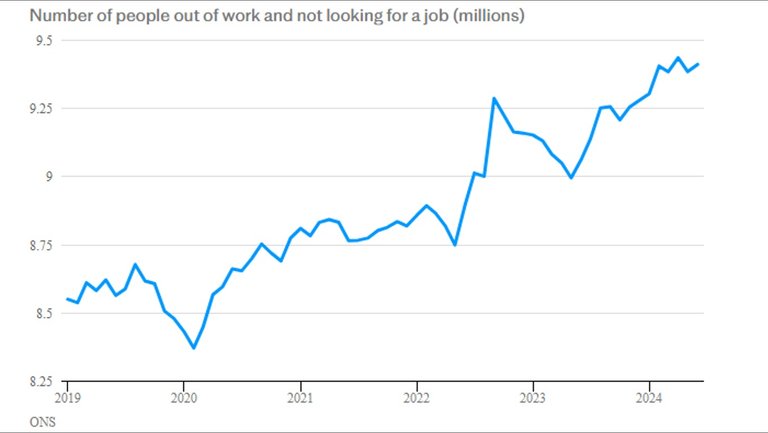
Source: ONS cited by the Telegraph
Ukraine Russia War

As the hype around Covid-19 died down, the war in Ukraine became the Government’s and media’s focus. The war in Ukraine was not a new war. The war began in 2014 when Ukrainian President Viktor Yanukovych was overthrown. Viktor Yanukovych was pro-Russian. His replacement, Oleksandr Turchynov, was not. At the time of the coup, the Ukrainian population was sharply divided in terms of their sentiments towards Western countries (i.e., the EU and US) and Russia. Those living in the North and West leaned more towards the Western countries, and those living in the South and East leaned more towards Russia.
Population of the Oblasts (i.e., region) of Luhansk, Donetsk, and Crimea were strongly pro-Russian; a high percentage of their populations are ethnic Russians (i.e., over 40% in Luhansk and Donetsk and over 60% in Crimea). Prior to 2014, the pro-Russian presidential candidate would obtain more than 85% of the vote share from these regions (Wikipedia).
Overthrowing Viktor Yanukovych was considered deeply unacceptable to most of the people living in these regions. These Oblasts wanted independence from Ukraine. Crimea was taken back by Russia. Luhansk and Donetsk formed de facto states not recognised by Ukraine. This led to an independence war between the Ukrainian military and the Russian backed separatist groups.
In February 2022, Russia became formerly involved. The Russian military invaded Ukraine and rapidly occupied large areas of Ukrainian territory. The strategy was to force Ukraine to comply with Russia’s demands. These included neutrality (e.g., never to join NATO), recognition of Crimea as Russian territory, recognition of Luhansk and Donetsk as independent states, and the demilitarization of Ukraine. The Ukrainian Government declined. Russia diverted their military attention to east Ukraine. Since then, Russia has formerly declared Luhansk, Donetsk, Zaporizhzhia, and Kherson Oblasts as part of Russia. This enables Russia to offer these regions more protection in accordance with their constitution (e.g., Article 59).
Western Governments and mainstream media almost universally came out in support of Ukraine. It was an easy position to sell to the public considering the extent of aggression that Russia showed with their invasion. The media deliberately failed to discuss Russia’s grievances and NATO’s provocation through expansion. Western Governments attempted to block Russia’s version of events by immediately banning Russian media such as RT and Sputnik. If people in western countries wanted a balanced view of the war, they needed to access social media such as X and Odysee.
Russia has been vilified by the West for a very long time (e.g., Cold War from 1947 to 1991). Cultural differences have made this easy to do. Russia does not practice a western style of ‘democracy’. There is no credible opposition to Vladimir Putin; hence, he can act as a dictator. Those who have opposed him or shown disloyalty have met with unfortunate ends (e.g., Yevgeny Prigozhin). LGBTQIA+ people are not given the same freedom and protected rights as they do in western countries. They have stringent laws regarding the press and freedom of speech.
I discuss the war in Ukraine in several posts. See below:
- Russia Invades Ukraine: What is going on?
- Russia-Ukraine War 2022: Winners and Losers (Part One: Losers)
- Russia-Ukraine War 2022: Winners and Losers (Part Two: Winners)
- Are we heading for World War 3?
Western countries have supplied Ukraine with an enormous amount of weapons and ammunition; over US$100 billion worth (Wikipedia). This is higher than Russia’s entire annual defence budget (Deagel). These may have been low quality or older weapons, but the sheer quantity would still have an impact on the war.
Propaganda was used to create the impression that Ukraine had a good chance of winning this war. When, in reality, they had no chance of winning the war. The propaganda was used to convince the public in the west to support the provision of weapons to Ukraine as well as to convince the Ukrainians they could actually win the war. Ukrainians were sufficiently equipped and motivated to significantly prolong the war with Russia. The war has been greatly beneficial to weapons companies, banks that finance the war as well as the rebuilding of Ukraine, construction companies, and green energy companies. A high death toll of Ukrainians and Russian soldiers would be inevitable, but this did not bother Western Governments. They endeavoured to continue the war at almost any cost.
Western countries heavily sanctioned Russia. These sanctions contributed to considerably higher fuel costs, which contributed to spiralling inflation in western countries. Russia suffered little from these sanctions. They managed to sell their oil through other countries as well as build stronger economic ties through the BRICS alliance (Brazil, Russia, India, China, and South Africa).
Western Governments’ response to Covid-19 was going to cause serious economic problems. Excessive printing of money was going to cause spiralling inflation, and lockdowns had permanently damaged supply chains. Russia and the sanctions could be used as an excuse for most of the economic problems that had been mostly triggered by their Covid-19 responses, but actually had roots much further back. See my post, Cost of Living Crisis – A Collection of Symptoms caused by Serious Long-term Political Failure for a more detailed account of these problems.
The cost of living crisis and the media scaremongering about a potential world war placed further strain on society. The endless flow of money to Ukraine and the increasing financial stress on the public added to the public’s impression that they were of low priority.
The Israel Divide

On October 7, 2023, Hamas attacked Israel. Hamas terrorists murdered 1,200 people, mostly Israeli's, and kidnapped another 200. They intended for Israel to respond very aggressively, and kill thousands, possibly hundreds of thousands of Gazans. This was to justify a larger scale attack from enemies of Israel such as Syria, Lebanon, Yemen, Turkey, Afghanistan, Iraq, Iran, and various terrorist groups such as Islamic Jihad, Houthis, and Hezbollah.
Gaza is a densely populated area. A war in Gaza puts civilians at great risk. However, neighbouring countries refused to help evacuate civilians. They did the opposite. Egypt reinforced its border to prevent any civilians from escaping the war. Yet, Egypt did nothing to stop the movement of terrorists and weapons underneath their border through a complex network of tunnels. We can strongly argue that the Egyptian Government wanted as many Gazans to die as possible.
Israel’s response was considerably more measured than Hamas and their backers might have hoped. They did a good job of strategically targeting Hamas leadership and defeating most of their fighters. Hamas, and the left and ‘centrist’ western media did a very good job at spreading anti-Israel propaganda. The narrative that Gaza, the Palestinians, and even Hamas were now the victims of Israeli aggression. The previous 20 months of biased coverage against Russia for being the aggressors was fresh in people’s minds. The mainstream media manipulated people into transferring their negative emotions onto Israel, who were now being portrayed as the aggressors.
Every week for months, there were large anti-Israel protests in London and sometimes across other large cities in the UK. Many of the protestors chanted anti-Israel chants such as ‘from the river to the sea’. Some even called for Jihad or Intifada. On some occasions, monuments and statues were defaced or vandalised. The police rarely did anything. However, when a man held up a sign ‘Hamas are Terrorists’, he was arrested and his sign torn up.
During other protests, such as anti-lockdown ones, the police were far heavier handed. Even during non-protest marches, the police treated the marchers as dangerous thugs. This was apparent on Armistice Day (11 November 2023) and Saint George’s Day (23 April 2024) marches. The police had become political, and they were not covering this up. This first started to become obvious during the BLM protests of 2020.
In my post Global Collapse – Part 3: Israel-Hamas Conflict, I discuss the anti-Israel protests and the police’s responses to them.
Stoking Divide from All Sides
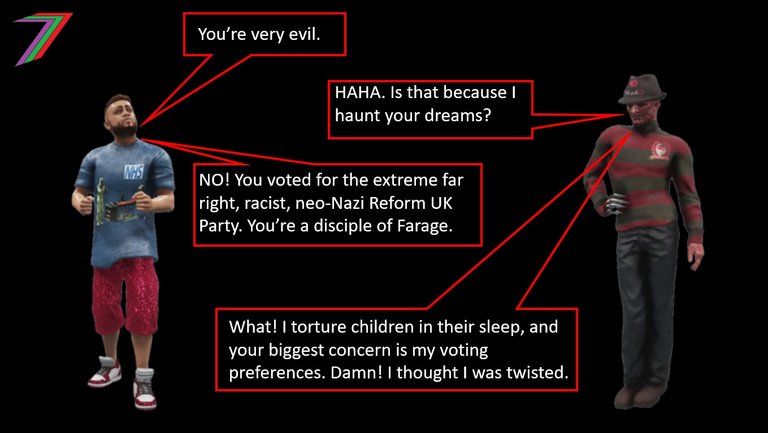
Division in the UK has been stoked for a long time. Society has been fundamentally divided by artificial ideological lines of left and right. The left are primarily represented by the Labour Party, and the right were primarily represented by the Conservative Party. The Conservative Party will, most likely, be replaced by the Reform Party, which aligns more closely with the prevailing ideology of the right. I discuss this shift in my post, UK General Election 2024.
Left and right ideologies serve different purposes for the Establishment. They traditionally take turns at governing (i.e., two party and two ideology political systems). For example, the left would expand Government powers and intervention, and the right would use these powers to increase authoritarianism. In the long-run, it did not matter which parties won elections, the general direction was a more powerful state and a gradual widening of the wealth gap between the rich and poor.
More people have become aware that changing the governing party makes very little difference. The main parties essential have the same long-term goals. In the US, the solution was Donald Trump. He played an anti-Establishment role. He played it so well that he actually won the 2016 Presidential Election. Since then, the mainstream media, most other politicians, and even the judiciary have gone to great lengths to villainise him. This has strengthened the perception that he is anti-Establishment. Donald Trump had become the new blueprint for the right.
Boris Johnson appeared to be the UK’s version of Donald Trump. His championing of Brexit made him look like an anti-Establishment character. However, this was not followed through as his Conservative Party more closely overtly aligned themselves with Establishment agendas. Boris Johnson was replaced with Rishi Sunak. The almost immediate axing of Liz Truss (Prime Minister between Boris Jonson and Rishi Sunak) was essentially the declaration that the Conservative Party had abandoned its traditional party values. This was the beginning of the last phase of the party’s demise.
Nigel Farage, the leader of the Reform Party, more closely fits the role of the UK’s Donald Trump. He has finally won a seat in the UK Parliament. Despite his party only winning just five seats. He is becoming recognised as the real voice of opposition. If the UK switches to a proportional representation voting system, the Reform Party is most likely to become the official opposition.
The divide is left and right, but what does that actually mean. We expect debate to be around approaches to agreed upon topics. For example, the necessity of immigration. Instead, the two sides are locked into different paradigms. Therefore, debate becomes impossible. For example, instead of nationalism vs. globalism, we have patriotism vs. anti-racism. These two propositions are far from mutually exclusive. Someone can be patriotic and not racist. I would argue that that position describes the majority of the British public.
Locking people into different paradigms ensures people will never reach a compromise. Someone who sees the problem as racism, will never accept that some racism is necessary. Someone who sees the problem as the invasion of their country will never accept sacrificing some sovereignty as acceptable. The divide can only be resolved by attempting to see someone else’s worldview. The mainstream and most alternative media want to ensure that will never happen. They do this by insisting one worldview is correct.
In short, one side has been brainwashed by woke ideology, and the other side is being captured to be brainwashed into believing mass immigration is the fundamental problem rather than a symptom of a much deeper problem.
Connecting the Dots
Below is a quick summary of how the events described in this post have contributed to the current social unrest in the UK.
- Brexit strongly divided people on EU membership. Reducing immigration was one of the key reasons people wanted to leave the EU.
- The responses to Covid-19 created strong distrust in the Government, created a health crisis, and played a major role in the cost of living crisis. The health crisis has reduced the workforce. This has contributed to increased immigration.
- Support for Ukraine has come at a huge financial cost to people living in the UK. It has directly drained resources through direct support. It has greatly added to the cost of living crisis by causing oil prices to soar.
- The war between Israel and Hamas has greatly divided the British public. The Muslim and Woke populations have come out strongly against Israel’s response to the Hamas terrorist attacks. The police and media have treated their protests as justified, and anyone opposing them has been labelled far right.
In Part 2, I will discuss the different viewpoints from various sides of the argument.
My New Book, Sapien Loop

I have published an ebook on Amazon; it is titled ‘Sapien Loop: End of an Era’. The book is fiction. I do not normally write fiction. However, I felt it was appropriate considering what is happening in the world today. Freedom is the most important thing we have, but we are gradually losing it. I have covered this in many of my posts.
In the story, most citizens do not understand the concept of freedom because they have never really experienced it. In essence, the story is about an alien world that might represent our not-so-distant future. There are many other elements to the story that are an abstract and exaggerated version of our reality. I believe this book to be an important read, and I believe it has the potential to change the way you think.
Brief Summary of Sapien Lopp
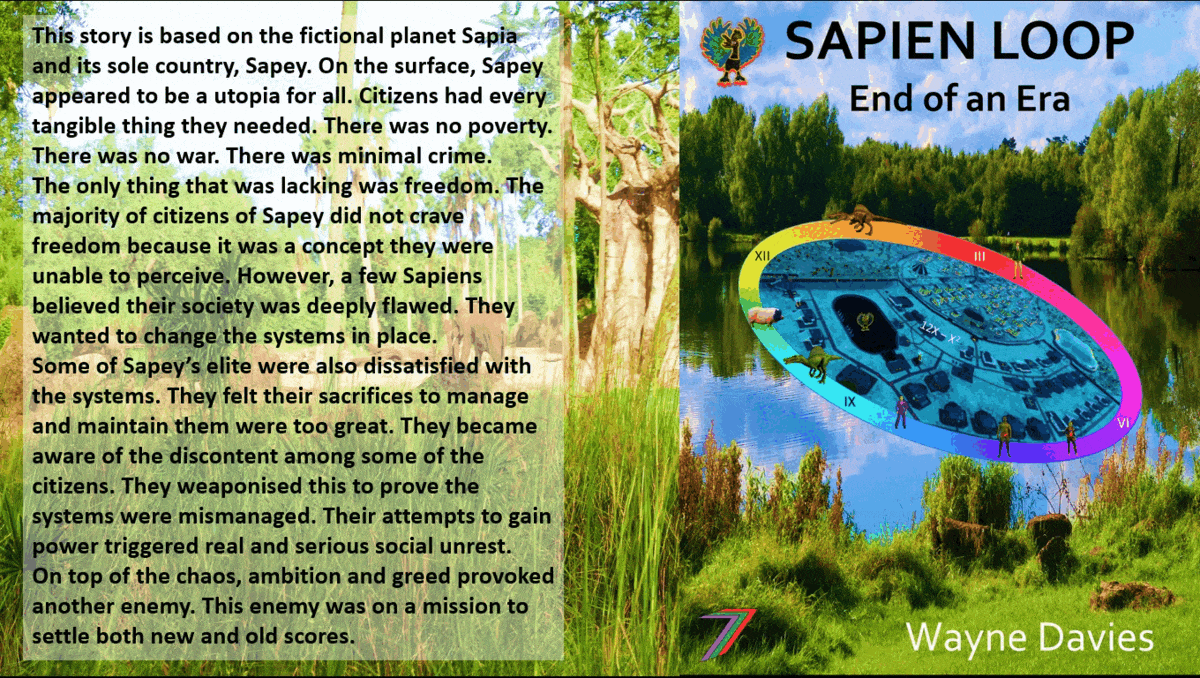
This story is based on the fictional planet Sapia and its sole country, Sapey. Sapey is portrayed as a form of utopia for all its citizens. No poverty. No war. Almost no crime. Opportunities for all.
This was enough for most citizens, but not all. In one of the small regions, some of the citizens had become discontent. They felt something important was missing in their lives. Their discontent did not go unnoticed. Some of the Sapey elite wanted to weaponise this discontent to gain more power. This created more chaos than they anticipated. This led to further widespread social unrest.
On top of the chaos, ambition and greed provoked another enemy. This enemy was on a mission to settle both new and old scores.
If you want to buy a copy of the book, below are links to the relevant Amazon websites for each country it is available in. The book is priced at approximately US$5.08.
- Amazon USA
- Amazon UK
- Amazon Germany
- Amazon France
- Amazon Spain
- Amazon Italy
- Amazon Netherlands
- Amazon Japan
- Amazon Brazil
- Amazon Canada
- Amazon Mexico
- Amazon Australia
- Amazon India
I am also running monthly contests where participants are required to answer questions based on the book. The prize is 30 Hive Power plus upvotes for the first twelve entries. You can recover the cost of the book with just one win.
Hive: Future of Social Media
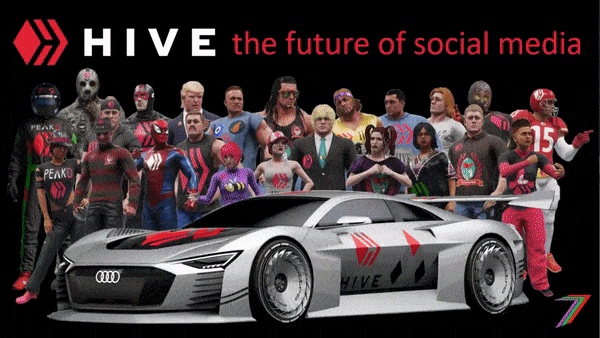
Spectrumecons on the Hive Blockchain

You've been curated by @plantpoweronhive! Delegations welcome!